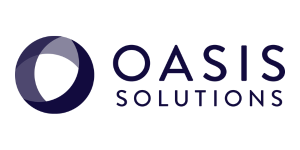
The modern buying cycle has changed from a linear exercise with a couple of players to a nebulous of decision makers and influencers that all have access to a wealth of knowledge, at their fingertips. Different roles bringing different perspectives into a purchasing decision, all motivated by different factors and seeking different outcomes for their role or department. The average buying cycle for purchases over $5000 is over 24 months, but only involves your sales rep for less than 15% of that time, according to Gartner in 2019. So how do you shorten sales cycles in this changing environment?
And why are sales cycles taking so long? From awareness, evaluation, selection to purchase, the typical sales cycle has become a lengthy endeavor coupled with volumes of data and information.
Business cases, demos, objections and Proof of concepts must all be tailored to the roles at the table. Today, the average buying team has over six roles influencing the decision. The larger the deal, the more complex this can get. A recent Gartner survey asked over 500 buyers if they repeated the following tasks during the buying cycle:
- problem identification
- solution exploring
- requirements building
- supplier selection
In every category over 75% of buyers said they repeated these tasks. The biggest objections came from cost and risk associated with the purchasing decision. So how can your content mitigate these concerns?
In an effort to effectively prospect for clients in the current environment, your arrows must hit tighter targets and your messages must resonate within specific roles. It is no longer enough to offer expertise and solutions in a blanketed manner. Your clients are struggling in different ways in 2020; they are either:
- fighting to survive - They might be one lost client away from going out of business entirely.
- growing rapidly – One out of every five businesses is growing because of COVID-19, but they may not be able or prepared to take advantage of an increase in orders if they’re supply chain has been impacted.
- stagnant and uncertain
Today, prospects do not want conversations, they want information. If you can provide valuable information, they will engage in a conversation.
The many roles within the organization that are hyper-focused on their needs to perform and are seeking new and inventive content to lead them in best practices: they want to hear success stories and then partner with someone who can replicate the success within their organization. Stories sell! People want to hear about how your organization has solved problems and brought success to similar organizations. Your sales team has to be able to articulate business impact from the first meeting and resonate throughout the sales cycle.
This leads to a shift in focus in your marketing and prospecting efforts. Solution providers have to be able to speak many languages - not only your primary role, but the language that will connect and appeal to the multiple mindsets and initiatives of the operational leaders impacted by your solution, as well as Sales and Marketing, HR, Finance, Production and Operations.
Messages, both in marketing and sales, have to speak directly to the challenges your clients and potential clients are facing. You must become the trusted source for business intelligence in your market/vertical. If you do not, you will fall into a bucket with everyone else doing the same, old messages. You will not be disruptive and you will not be heard.
Unqualified deals clogging the pipeline
Another problem confronting modern sales leaders are unqualified deals clogging the pipeline. Due to the number of roles, the old methods of qualification of budget, authority, need, time frame and urgency are falling further from the mark. Today, we must analyze the number of active stakeholders, pattern of content consumption, degree of business impact and the cause for change. Up to nine roles can now disqualify your deal; IT, Leadership, VC, Finance, Risk Management, Procurement, Operations and more, can veto the deal at any time.
Weak messaging
Weak messaging will lead to losses. Lack of clear differentiation from your competitor(s), low quality sales presentations, confusing or contradictory material are all immediate disqualifiers. To increase conversion you must be able to articulate business impact, use points of differentiation and of course, tailor content by role/industry/KPI. You must test this content with trusted advisors and prospects. The ability to guide customers through the buying cycle is imperative to unclogging the pipeline. The ability to guide prospects through different “checkpoints” of the buying cycle will increase effectiveness by 2.6 times, according to Gartner research.
In summary, targeted, role-based messaging that articulates business impact throughout the sales cycle is key to unclogging the pipeline and increasing conversion. Managing your demos and POC’s with clear expectations and results will save months of time. It is time to employ prescriptive selling, buyer enablement, and new technology to meet the needs of the modern buying teams.
Interested in learning more to shorten sales cycles, unclog the pipeline, and power your sales team? Attend the three-part Executive Sales Series hosted by SME's for open conversations on what to do when constricted budgets have protracted the sales process, three sales model ideas to drive growth for your sales team and more. Use the link below to register or reach out to Matt Simons: matt@oasisky.com for more information.
Related Articles:
Leading Your Remote Sales Team to Success
Unclog the Pipeline: How to Shorten Sales Cycles and Win More Deals
Winning on the Hill: Gaining Ground on the Competition
Scalable Sales Models that Work for 2020 and Beyond
Leading Your Remote Sales Team to Success replay
How to Choose the Best CRM for Your Organization: NetSuite vs. Salesforce




